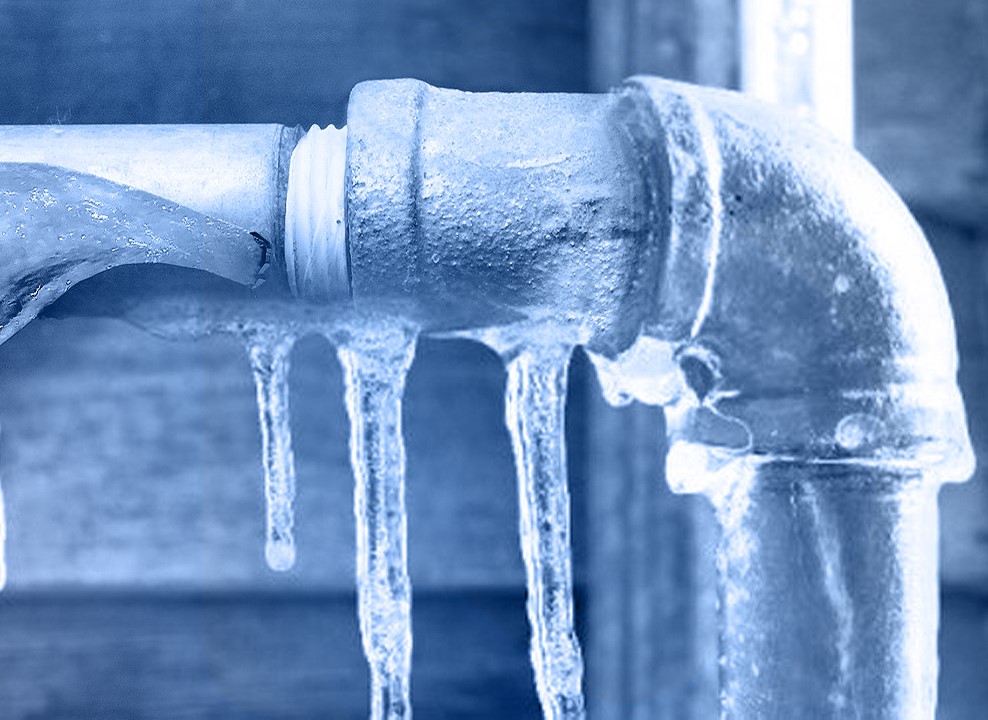What're your ideas with regards to Preventing and dealing with frozen pipes?

Cold weather can damage your pipes, especially by freezing pipelines. Below's how to prevent it from occurring and what to do if it does.
Introduction
As temperatures decrease, the danger of frozen pipes boosts, possibly resulting in costly fixings and water damages. Understanding exactly how to stop icy pipes is vital for house owners in cool climates.
Comprehending Icy Pipelines
What causes pipelines to freeze?
Pipelines ice up when exposed to temperature levels listed below 32 ° F (0 ° C) for extended periods. As water inside the pipes ices up, it expands, taxing the pipe wall surfaces and possibly causing them to break.
Threats and damages
Icy pipelines can result in water system interruptions, residential or commercial property damages, and expensive repair work. Burst pipes can flood homes and cause extensive structural damages.
Indications of Frozen Piping
Identifying icy pipelines early can stop them from breaking.
Just how to determine icy pipes
Look for lowered water flow from taps, uncommon smells or sounds from pipes, and noticeable frost on subjected pipes.
Prevention Tips
Insulating prone pipelines
Wrap pipes in insulation sleeves or make use of heat tape to protect them from freezing temperatures. Focus on pipelines in unheated or exterior areas of the home.
Home heating methods
Maintain interior spaces sufficiently heated up, especially locations with plumbing. Open cupboard doors to permit cozy air to circulate around pipes under sinks.
Securing Outdoor Plumbing
Garden pipes and outdoor faucets
Disconnect and drain yard hoses prior to winter months. Set up frost-proof faucets or cover outside faucets with insulated caps.
What to Do If Your Pipelines Freeze
Immediate activities to take
If you believe frozen pipelines, maintain faucets open to ease pressure as the ice thaws. Make use of a hairdryer or towels taken in warm water to thaw pipelines slowly.
Long-Term Solutions
Architectural modifications
Consider rerouting pipes away from exterior walls or unheated locations. Add additional insulation to attics, cellars, and crawl spaces.
Updating insulation
Purchase top quality insulation for pipes, attics, and walls. Correct insulation aids maintain consistent temperatures and lowers the risk of frozen pipes.
Conclusion
Protecting against frozen pipes needs proactive actions and fast responses. By understanding the causes, signs, and safety nets, homeowners can protect their plumbing throughout winter.
5 Ways to Prevent Frozen Pipes
Drain Outdoor Faucets and Disconnect Hoses
First, close the shut-off valve that controls the flow of water in the pipe to your outdoor faucet. Then, head outside to disconnect and drain your hose and open the outdoor faucet to allow the water to completely drain out of the line. Turn off the faucet when done. Finally, head back to the shut-off valve and drain the remaining water inside the pipe into a bucket or container. Additionally, if you have a home irrigation system, you should consider hiring an expert to clear the system of water each year.
Insulate Pipes
One of the best and most cost-effective methods for preventing frozen water pipes is to wrap your pipes with insulation. This is especially important for areas in your home that aren’t exposed to heat, such as an attic. We suggest using foam sleeves, which can typically be found at your local hardware store.
Keep Heat Running at 65
Your pipes are located inside your walls, and the temperature there is much colder than the rest of the house. To prevent your pipes from freezing, The Insurance Information Institute suggests that you keep your home heated to at least 65 degrees, even when traveling. You may want to invest in smart devices that can keep an eye on the temperature in your home while you’re away.
Leave Water Dripping
Moving water — even a small trickle — can prevent ice from forming inside your pipes. When freezing temps are imminent, start a drip of water from all faucets that serve exposed pipes. Leaving a few faucets running will also help relieve pressure inside the pipes and help prevent a rupture if the water inside freezes.
Open Cupboard Doors
Warm your kitchen and bathroom pipes by opening cupboards and vanities. You should also leave your interior doors ajar to help warm air circulate evenly throughout your home.

Do you like reading up on 6 Ways to Prevent Frozen Pipes? Write a remark directly below. We'd be glad to hear your reactions about this blog. Hoping that you come back again in the near future. Don't hesitate to take the time to distribute this blog post if you liked it. We treasure your readership.
Source